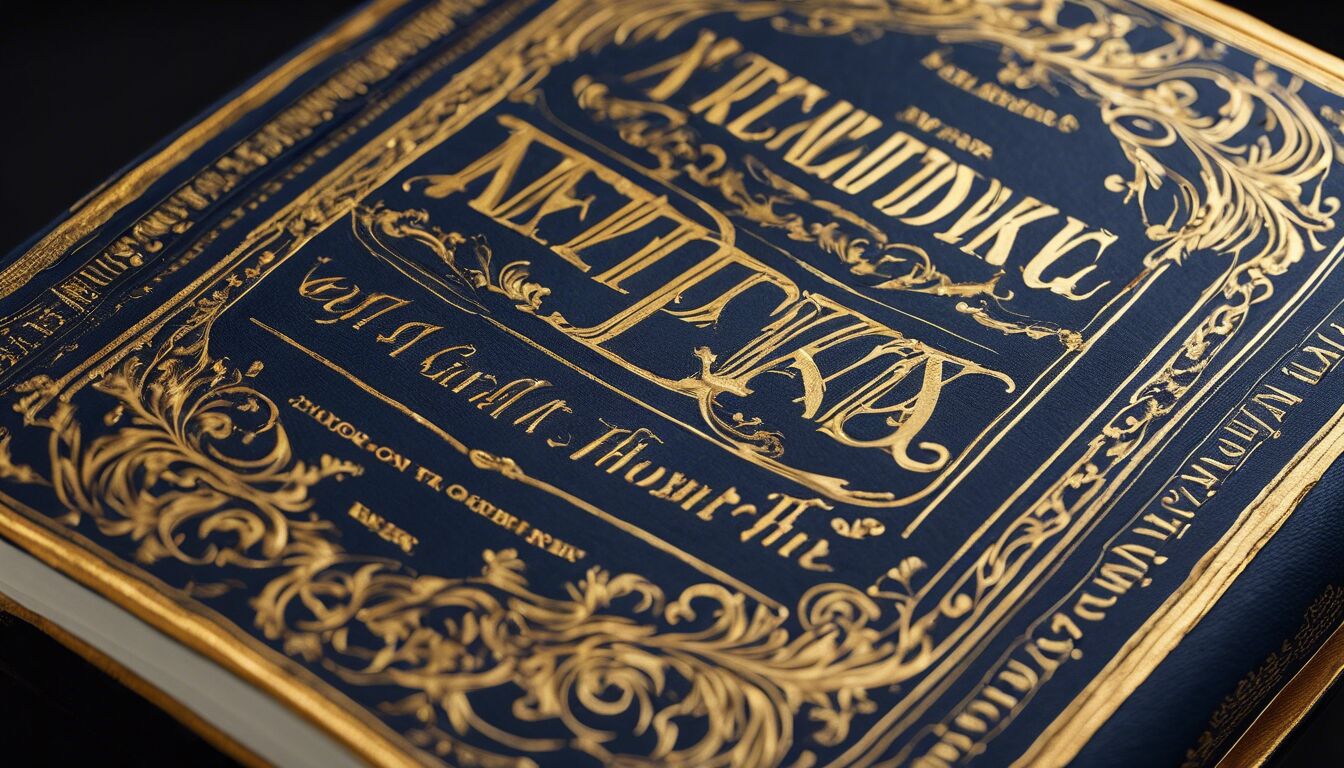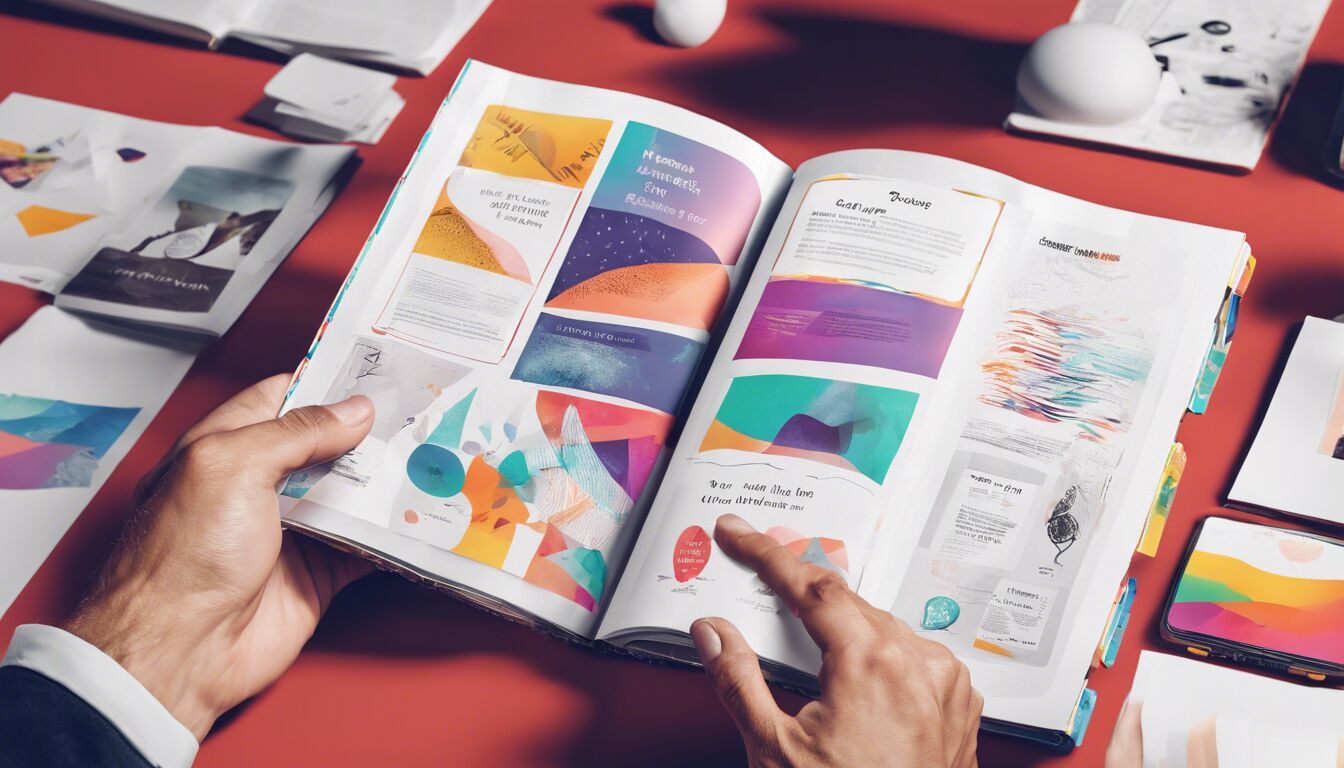blog
High-Impact Fantasy Cover Design Practices
When designing a cover, one of the foundational steps is to understand the target audience. The effectiveness of design practices hinges on how well the designer can connect with the demographics, preferences, and expectations of the intended readers. This audience insight will drive decisions regarding aesthetics, content placement, and overall thematic elements. Age, gender, cultural background, and even regional preferences play pivotal roles in shaping the design. For instance, a cover aimed at a young adult audience may employ vibrant colors and dynamic graphics, while a cover for a business publication might prioritize a more subdued and professional look.
By identifying the specific desires and interests of your target readers, you can tailor your design to attract and engage them effectively. A deep dive into reader personas can reveal valuable information such as their favorite genres, preferred visual styles, and even the type of messaging that resonates with them. In the words of a seasoned designer, “Knowing your audience is half the battle; the other half is delivering what they never knew they wanted.”
Furthermore, understanding the target audience informs the strategic use of emotional triggers in cover elements. A thoughtfully designed cover can evoke excitement, curiosity, nostalgia, or trust, thus prompting potential readers to pick up the publication. Therefore, the more precise your audience profile, the more impactful your cover will be.
Choosing the right color palette
 Selecting an appropriate color palette is a crucial step in ensuring your cover design resonates with its intended audience. Colors are powerful communicators that carry emotional undertones and psychological cues, which can significantly influence a reader’s perception and decision-making process. The right color palette can evoke specific emotions and reactions, aligning the cover with the tone and style of the content within.
Selecting an appropriate color palette is a crucial step in ensuring your cover design resonates with its intended audience. Colors are powerful communicators that carry emotional undertones and psychological cues, which can significantly influence a reader’s perception and decision-making process. The right color palette can evoke specific emotions and reactions, aligning the cover with the tone and style of the content within.
Understanding the color wheel and the relationships between colors, such as complementary, analogous, and triadic schemes, is fundamental for creating a harmonious look. A complementary color scheme, for instance, pairs colors opposite each other on the wheel, creating a vibrant and dynamic effect, ideal for covers meant to catch the eye quickly. In contrast, an analogous color scheme uses colors next to each other on the wheel, producing a more cohesive and serene appearance, suitable for more subdued or sophisticated publications.
“Color is a power which directly influences the soul.” – Wassily Kandinsky
It’s essential to consider cultural and contextual connotations of colors as well. For example, while white denotes purity and simplicity in Western cultures, it can symbolize mourning in some Eastern cultures. Red is often associated with passion and energy but can also signify danger or urgency, depending on the context. Tailoring your color choices to the cultural and emotional backgrounds of your audience is vital for creating an impactful cover.
In addition to cultural considerations, the psychological impact of colors plays a significant role in design practices. Blues and greens tend to evoke calmness and trust, making them popular choices for business and wellness publications. Warmer colors like reds, oranges, and yellows can convey excitement, warmth, and enthusiasm, which can be very effective for entertainment or children’s books.
Finally, it’s imperative to ensure readability and contrast within your color palette. The chosen colors should make the text stand out without clashing or causing eye strain. High-contrast color combinations, such as black text on a yellow background or white text on a dark green background, are usually more readable and should be considered, especially for key textual elements like the title and author name. Balancing aesthetic appeal with practical readability is the hallmark of effective cover design practices.
Typography and font selection

Typography plays a pivotal role in creating an impactful cover design and should be approached with meticulous attention to detail. The selection of fonts goes beyond mere aesthetic appeal; it encompasses functionality and legibility, ensuring that the cover not only attracts attention but also clearly communicates the intended message to the reader. The right typefaces can set the tone for the entire publication, echoing the themes and emotions encapsulated within the content.
One of the primary considerations in typography is readability. The fonts chosen must be easy to read at a glance, especially from a potential reader’s first encounter on a bookshelf or online listing. Serif fonts, like Times New Roman or Georgia, tend to convey tradition and reliability, making them suitable for serious, literary, or academic works. On the other hand, sans-serif fonts such as Helvetica or Arial offer a modern and clean look, ideal for contemporary or tech-related publications. Script fonts and decorative styles can add a touch of elegance or whimsy but should be used sparingly to avoid overwhelming the design.
Font size and spacing are also critical elements in effective typography. Titles should be prominently featured, often in larger and bolder fonts that immediately catch the eye. Subtitles, author names, and other secondary text need to be easily distinguishable and well-organized without competing for attention. Adequate line spacing, or leading, ensures that text blocks are easily readable and not cramped, which can significantly enhance the overall aesthetic of the cover.
In addition to size and spacing, designers must consider the alignment and structure of text elements. Left-aligned text typically offers the best readability, while centered or justified text can create a more formal or balanced look, depending on the design’s intent. Hierarchical arrangements are crucial; the visual hierarchy should guide the reader’s eye naturally from the most important elements, such as the title, down to the supporting details. Utilizing different weights and styles within the same typeface family can help differentiate between these elements without introducing visual clutter.
Another vital aspect of typography is the emotional resonance inherent in font choices. Fonts carry their own psychological impact; for example, bold, uppercase fonts can evoke a sense of urgency and importance, while italic or cursive fonts can suggest delicacy or sophistication. Combining fonts with complementary characteristics can create a dynamic and inviting cover. However, overusing varied fonts can lead to a chaotic and unfocused design, diluting the cover’s impact. A good rule of thumb is to limit the design to two or three typefaces, balancing unity and variety.
The interplay between typography and other design elements, such as color and imagery, also warrants thoughtful consideration. The font color should stand out against the background while harmonizing with the overall color scheme. Contrasting light text against dark backgrounds or vice versa often provides optimal readability. Additionally, integrating text with imagery, such as overlaying titles on graphics or photographs, should enhance the design without compromising legibility.
By mastering font selection and typographic design practices, designers can significantly elevate the quality and effectiveness of a cover. Thoughtfully chosen fonts that align with the publication’s theme and audience preferences not only draw the reader in but also enhance the overall reading experience from the very first glance.
Visual hierarchy and layout
Creating a clear visual hierarchy and an effective layout is fundamental to producing a high-impact cover design. These elements work together to ensure that key information is communicated efficiently, guiding the reader’s eye naturally from the most important details to the secondary ones. Visual hierarchy organizes content to reflect its relative importance, while layout determines how these elements are arranged within the available space, working in harmony to form a cohesive and engaging design.
The most crucial aspect of visual hierarchy begins with identifying the primary focal points of the cover. Typically, these include the main title, subtitle, author name, and key imagery. The hierarchy should prioritize these elements based on their importance to the reader. The main title, for instance, is usually the largest and most prominently positioned element, followed by the author name and subtitle. By employing varying font sizes, weights, and colors, a clear distinction is made between different pieces of information, making it easier for the reader to process them sequentially.
Strategic placement of elements is essential to an effective layout. The rule of thirds, a fundamental design principle, divides the cover into a three-by-three grid and suggests placing key elements along these lines or intersections. This approach helps balance the composition and create visual interest, leading the viewer’s eye across the cover in a natural, flowing manner. Symmetry and asymmetry both have their places in cover design. Symmetrical layouts offer a clean, orderly appearance ideal for more formal publications. In contrast, asymmetrical layouts can create a more dynamic and engaging look, suitable for creative or contemporary works.
Whitespace, or negative space, plays a pivotal role in both visual hierarchy and layout. Effective use of whitespace prevents overcrowding and enhances readability, allowing each design element to breathe. It keeps the cover from appearing cluttered and helps draw attention to the most critical parts of the design without distraction. Well-balanced whitespace can also add a touch of sophistication and elegance to the overall design.
In terms of alignment and grouping, consistent alignment of text and images across the cover ensures a professional and polished appearance. Aligning elements along a common axis, whether left, right, or center, creates a cohesive structure. Grouping related items, such as placing the author name near the title or aligning a subtitle directly below the main title, reinforces the logical flow of information and enhances the reader’s ability to navigate the content effortlessly.
Visual elements such as lines, borders, and shapes can aid in establishing hierarchy and structure within the layout. Lines and borders can separate different sections or emphasize certain areas, guiding the reader where to look next. Shapes can frame important information or highlight a particular theme within the cover. However, these graphical tools should be used judiciously to avoid overwhelming the design.
Contrast is another vital tool in establishing a strong visual hierarchy. Contrast can be achieved through varying font sizes, colors, and weights, as well as through the juxtaposition of light and dark elements. High contrast ensures that the most important elements stand out prominently and can significantly improve readability, especially from a distance or in a thumbnail image online.
Lastly, it’s crucial to consider the overall aesthetic coherence. All these design practices—how typography, color, imagery, and spacing come together—should support a unified theme and tone appropriate for the content of the publication. Every element in the layout must complement one another, creating a harmonious and impactful cover that captures attention and conveys the book’s essence accurately.
By meticulously crafting visual hierarchy and layout, designers can ensure that a cover not only attracts attention but effectively communicates key information, elevates aesthetic appeal, and engages the reader right from the first glance.
Incorporating imagery and graphics
 Incorporating imagery and graphics is a critical component of effective cover design practices, serving as a visual beacon that can attract and captivate potential readers at first glance. The selection and integration of images and graphics must be handled with precision, as these elements fundamentally shape the reader’s initial connection with the publication. Striking visuals can evoke emotions, set the tone, and provide context, all of which are essential for making a memorable first impression.
Incorporating imagery and graphics is a critical component of effective cover design practices, serving as a visual beacon that can attract and captivate potential readers at first glance. The selection and integration of images and graphics must be handled with precision, as these elements fundamentally shape the reader’s initial connection with the publication. Striking visuals can evoke emotions, set the tone, and provide context, all of which are essential for making a memorable first impression.
When choosing imagery, it is crucial to align it with the content and target audience of the publication. The imagery should be relevant and evocative, speaking to the themes and moods within the book. For instance, a mystery novel might benefit from dark, enigmatic images that hint at suspense and intrigue, whereas a romance novel might use softer, more intimate visuals to convey themes of love and connection. Understanding the preferences and expectations of your audience ensures that the chosen imagery resonates and engages effectively.
High-quality images are non-negotiable in professional cover design. Pixelated or low-resolution graphics can detract from the cover’s overall impact, giving an impression of low-quality content. It’s worth investing in high-resolution stock photos or professional photography to ensure that the final product looks polished and attractive. Additionally, illustrations can add a unique and custom touch to a cover, setting it apart from competitors. When using illustrations, consistency in style is important to maintain a cohesive look that complements the book’s tone and genre.
Graphics and imagery also need to be carefully integrated with other cover elements such as text and backgrounds. This process involves thoughtful layering and positioning to create a harmonious composition. The interplay between text and images should enhance the overall design without compromising legibility. For instance, if a detailed illustration forms the background, text overlays should be placed in contrasting colors and possibly with a slight shadow or outline to ensure they stand out. Similarly, if a photograph features prominently, the placement of text should take into account any natural lines or focal points within the image to avoid overlap and maintain clarity.
Visual balance is another key consideration when incorporating imagery and graphics. The distribution of visual weight across the cover should feel natural and deliberate. Placing a large graphic on one side of the cover paired with lighter text on the other can create a compelling contrast, whereas a centered image might require symmetrical text placement to maintain balance. The goal is to create a dynamic yet orderly layout that draws the eye smoothly from one element to the next.
Additionally, color harmony within imagery and graphics is crucial for a unified design. The colors within the chosen images should complement the broader color palette of the cover. If the main graphic is in bold, vibrant colors, the surrounding elements may need to be more subdued to avoid visual overload. Conversely, a monochrome or grayscale image can be striking against a backdrop of bolder typography or color blocks. The careful selection of complementary hues helps to integrate images seamlessly into the overall aesthetic.
Incorporating graphics such as icons, borders, or abstract shapes can further enrich the cover design. These elements should be used sparingly and purposefully to avoid clutter. Icons related to the book’s content—like a magnifying glass for a mystery or a heart for a romance—can serve as subtle yet effective visual cues. Borders and dividers can help frame text and imagery, adding structure and sophistication to the design.
Furthermore, the concept of visual storytelling should not be overlooked. A well-chosen image or illustration can tell a story all on its own, providing a snapshot of what readers might expect from the book. This storytelling aspect of imagery can create a deeper connection with the audience, enticing them to explore further.
Finally, designers should always consider the practical aspects of image use, such as licensing and copyright. Ensuring that all imagery and graphics used are either owned, licensed, or freely available for commercial use is critical to avoid legal complications.
By mastering the art of incorporating imagery and graphics, designers can create covers that are not only visually appealing but also deeply resonant and inviting, paving the way for a successful publication.
Testing and feedback for refinement

After painstakingly perfecting the visual elements and ensuring everything ties together, it is crucial to subject the cover design to rigorous testing and gather feedback for refinement. This step is essential to validate the design choices made and ensure they resonate with the target audience effectively
One of the first steps is to produce mockups of the cover on various platforms where it will be displayed. This includes physical copies for print, thumbnails for online stores, and even digital versions for e-readers. Each format may reveal different issues or opportunities for improvement that need to be addressed to optimize the design’s effectiveness across all mediums. This cross-platform testing ensures that the cover maintains its appeal, legibility, and integrity no matter how it’s viewed by potential readers.
Next, gathering feedback from a diverse group of individuals, including both design professionals and members of the target audience, can provide invaluable insights. Focus groups, surveys, and one-on-one feedback sessions can reveal how different people interpret the cover, what catches their eye, and what might be confusing or off-putting. Audience feedback is particularly important as it directly reflects the impressions and expectations of potential readers, providing a reality check against the initial design assumptions.
Analyzing this feedback can highlight specific elements that need tweaking. For instance, if multiple viewers struggle with reading the subtitle due to its color or font size, adjustments can be made to enhance its visibility. Similarly, if the primary imagery doesn’t evoke the intended emotions or doesn’t adequately represent the book’s themes, alternative graphics or illustrations may need consideration.
Iterative design practices play a key role during this refinement phase. Designers should be prepared to create several versions of the cover, each incorporating different suggestions from the feedback received. This iterative process not only hones in on the most effective design elements but also allows for experimentation with variations in color palettes, typography, and layout arrangements. Each new iteration should then undergo the same scrutiny and feedback process until a consensus is reached about the most compelling and effective design.
One practical tool for gathering statistical feedback is A/B testing, especially useful in a digital context. By presenting two or more cover designs to a segment of the target audience and measuring their reactions—such as click-through rates, time spent viewing the cover, or intention to purchase—designers can quantitatively assess which design performs better. This data-driven approach minimizes subjectivity and provides concrete evidence of which design choices resonate most strongly with the audience.
It’s also beneficial to leverage analytic tools and metrics available on various online platforms. For instance, by uploading different cover designs to social media or a website, engagement metrics such as likes, shares, comments, and overall impressions can provide additional layers of feedback. This real-world testing can help determine the cover’s effectiveness in attracting and engaging potential readers in an organic environment.
Feedback from industry professionals is equally important. Consulting with fellow designers, marketers, and even bookstore owners can provide expert perspectives on the cover’s commercial viability. These professionals often have keen insights into what makes a cover stand out in a competitive marketplace and can offer practical advice that enhances the cover’s appeal and marketability.
Once enough feedback has been collected and analyzed, and iterative improvements made, it’s vital to review all changes holistically. The final design should be subjected to a comprehensive assessment to ensure that all elements—typography, color palette, imagery, and layout—cohesively align with the book’s branding and intended message.
By embracing a thorough testing and feedback loop, designers can refine their covers to not only meet but exceed the expectations of their target audience. This ensures that the final product is not only aesthetically pleasing but also profoundly impactful, maximizing its potential to captivate and convert potential readers into loyal customers. Effective design practices culminate in a polished, engaging cover that stands out on the shelf and in the mind of the reader.

